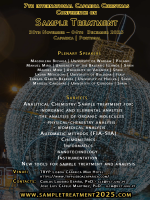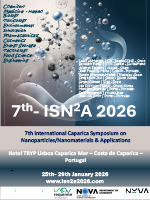ISBN
978-989-35197-4-5

Translational chemistry refers to the application of fundamental chemical research to real-world problems, often bridging the gap between laboratory discoveries and practical applications in areas like medicine, biology, materials science, arts, engineering, pharmaceutics and environmental science. It emphasizes taking insights gained from basic chemistry, molecules and translating them into innovations, such as new drugs, new sustainable materials, or processes that can be used in technology, hospitals, and industry. This approach often involves collaboration across disciplines, integrating knowledge from chemistry, biology, engineering, and other scientific fields to drive progress and address complex challenges.
For example, One crucial molecule in translational chemistry is adenosine triphosphate (ATP) and their relative ADP and AMP, which plays a vital role in cellular energy transfer. ATP serves as the primary energy currency in biological systems, driving numerous biochemical processes essential for life, such as muscle contraction, nerve impulse propagation, and biosynthesis.
Its significance extends beyond basic biology; in translational chemistry, ATP's role in cellular metabolism has guided the development of targeted therapies for diseases like cancer., but also it is a very exciting molecule in the functionalization and preparation of gold and Silver nanoparticles. This connection between fundamental research on ATP and its translational applications in other fields, exemplifies how a single molecule can illuminate pathways to innovative treatments, materials, nanomaterials, that ultimately improving patient outcomes and advancing the field of medicine.
Translational Chemistry is a multidisciplinary journal involving Chemistry in any scientific field.
Commitment on Diversity, Equity and Inclusion
Translational Chemistry – An Interface Journal has embraced integrity, transparency, inclusivity, collaboration, and freedom of thought as core values in its mission to evaluate, publish, disseminate, and enhance the scientific excellence of chemistry research from diverse global communities.
Central to these values is the acknowledgment that achieving meaningful progress in diversity, equity, and inclusion—considering various identities and their intersections such as ethnicity, race, culture, nationality, gender, sexual orientation, age, disabilities, and socioeconomic status—is essential for the chemistry and broader scientific communities.
Without this progress, they will be ill-equipped to address the challenges that lie ahead. The active participation of all community members is vital not only because evidence shows that diversity fosters innovation, improves decision-making, and enhances adaptability, but also from an ethical standpoint, ensuring that research benefits everyone, addresses global issues, and has the greatest possible impact.
Vol. 1 Issue 2
LEISHMANIASIS 2025
12th – 16th October 2025
Caparica (Lisbon), Portugal
SAMPLETREATMENT 2025
30th November – 04th December 2025
Caparica (Lisbon), Portugal
ISN2A 2026
25th – 29th January 2026
Caparica (Lisbon), Portugal